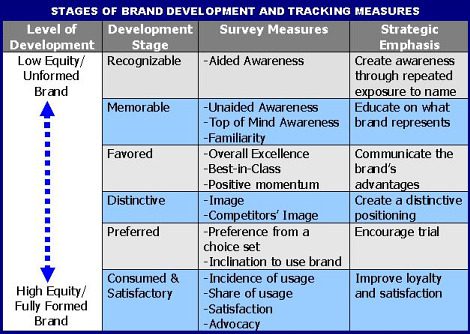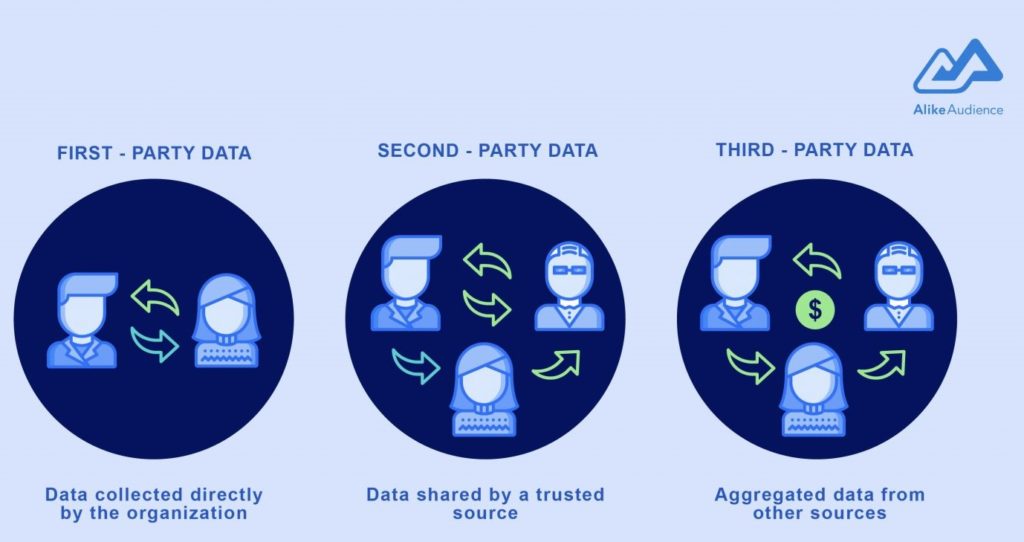Brand development is not a single step, but a continuous journey that requires careful planning and strategic execution.
In the digital age, where data is abundant and readily accessible, brands have a powerful tool at their disposal: data targeting. In this blog post, we will explore the concept of data targeting and its significance in driving brand development.
What is Brand Development?
Brand development refers to the strategic process of building, enhancing, and managing a brand’s identity and reputation over time. It involves shaping the perception of a brand in the minds of consumers and creating a strong and distinct brand image that resonates with the target audience.
Brand development encompasses various stages that collectively contribute to the growth and success of a brand. The stages of brand development typically include:
Brand Strategy: This stage involves defining the brand’s purpose, values, target audience, and positioning in the market.
Brand Identity: In this stage, the visual and verbal elements of the brand are created. This includes designing a compelling logo, selecting brand colours, creating a brand name, and developing brand messaging and tone of voice that align with the brand strategy.
Brand Communication: Here, the brand communicates its message and value proposition to the target audience through various marketing channels. This involves developing a comprehensive marketing plan, including advertising, content creation, social media engagement, and public relations activities.
Brand Experience: This stage focuses on creating a consistent and positive brand experience for customers at every touchpoint. It involves delivering exceptional customer service, ensuring product or service quality, and fostering positive interactions that align with the brand’s values.
Brand Monitoring & Evaluation: After establishing the brand, ongoing monitoring and evaluation are crucial to measure its performance and make necessary adjustments. This includes tracking brand metrics, customer feedback, and market trends to ensure the brand remains relevant and continues to meet consumer expectations.
Brand development is a comprehensive and dynamic process that involves strategic planning, creative execution, and continuous monitoring.

The Role of Data in Brand Development
Data serves as the foundation for informed decision-making in brand development. By utilising data targeting techniques, brands can identify their target audience, understand their needs and desires, and create personalised experiences that resonate with them. This approach enables brands to build trust, loyalty, and long-term relationships with their customers.
Benefits of Using Data Targeting for Brand Development
There are several benefits of using data targeting for brand development:
Identifying the Target Audience
One of the key benefits of data targeting is the ability to precisely identify the target audience. By analysing demographic, psychographic, and behavioural data, brands can create detailed buyer personas. These personas help define the characteristics, preferences, and pain points of the target audience, enabling brands to develop tailored marketing strategies.
Personalised Marketing Messages
Data targeting allows brands to create personalised marketing messages that resonate with individual consumers. By leveraging insights about their preferences, browsing history, purchase patterns, and social media activity, brands can deliver relevant content and offers that capture their attention and drive engagement. Personalization enhances the overall customer experience and strengthens brand loyalty.
Optimising Marketing Channels
Data targeting also helps brands identify the most effective marketing channels to reach their target audience. By analysing data on consumer behaviour and channel preferences, brands can allocate their resources more efficiently and focus on channels that yield the highest engagement and conversion rates. This approach ensures that marketing efforts are targeted and maximise return on investment (ROI).
A/B Testing and Optimization
Data targeting enables brands to conduct A/B testing and optimise their marketing campaigns in real-time. By segmenting audiences and testing different messages, offers, and creative elements, brands can gather data on what resonates most with their target audience. This iterative approach allows brands to continuously refine their strategies and improve campaign performance over time.
How to Start Using Data Targeting for Brand Development?
To start using data targeting for brand development, follow these six steps:
Define Your Goals
Clarify your brand development objectives and identify the specific areas where data targeting can support your goals. Determine whether you want to increase brand awareness, drive conversions, or improve customer retention.
Collect Relevant Data
Decide on what kind of data you need based on your goals. Gather data from various sources such as website analytics, customer surveys, social media insights, and CRM systems. Focus on data points that align with your brand goals and provide insights into consumer behaviour, demographics, and preferences.
Analyse and Segment Data
Use data analytics tools to analyse and segment the collected data. Identify patterns, trends, and common characteristics among your target audience. Segment your audience based on demographics, interests, purchasing behaviour, or any other relevant criteria.
Develop Buyer Personas
Create detailed buyer personas based on your data analysis. These personas represent your ideal customers and help you understand their needs, motivations, pain points, and preferences. Use these personas as a foundation for your targeted marketing strategies.
Tailor Messaging and Campaigns
Craft personalised marketing messages and campaigns that resonate with each specific buyer persona. Utilise the insights gained from data targeting to create compelling content, offers, and experiences that address the unique needs and interests of your target audience segments.
Monitor and Optimise
Continuously monitor the performance of your data-targeted campaigns. Track key metrics, such as engagement rates, conversion rates, and ROI. Use this data to refine your strategies, optimise your campaigns, and iterate based on the insights gained.
By following these steps, you can effectively harness the power of data targeting to drive brand development, engage your target audience, and achieve your brand objectives
Best Practices for Data Targeting for Brand Development
Having data might not suffice to successfully use it for brand development. Here are some tips and strategies for using data in brand development:
Data Privacy and Compliance
With great data comes great responsibility. Brands must prioritise data privacy and comply with relevant regulations, such as the General Data Protection Regulation (GDPR). Implementing robust data security measures and obtaining explicit consent for data collection and usage are crucial for maintaining trust and protecting consumer information.
Data Quality and Accuracy
Data targeting relies heavily on the quality and accuracy of the data collected. Brands should invest in robust data collection methods, implement data validation processes, and regularly clean and update their databases. By ensuring the integrity of the data, brands can make more informed decisions and achieve better results in their brand development efforts.
Integration of Data Sources
To maximise the effectiveness of data targeting, brands should integrate various data sources. Combining first-party data (collected directly from customers) with third-party data (obtained from external sources) can provide a comprehensive view of the target audience. Data integration allows for a more accurate understanding of customer behaviour and preferences, enabling brands to create more targeted and impactful campaigns.

Continuous Monitoring and Analysis
Data targeting is an ongoing process that requires continuous monitoring and analysis. Brands should regularly track key performance indicators (KPIs) and measure the success of their marketing campaigns. By analysing the data and extracting actionable insights, brands can adapt their strategies, identify emerging trends, and stay ahead of the competition.
Conclusion
Data targeting has revolutionised brand development by enabling personalised marketing strategies that resonate with consumers on a deeper level. By leveraging consumer data, brands can identify their target audience, deliver personalised experiences, optimise marketing channels, and continually refine their strategies.
However, it is crucial for brands to prioritise data privacy, ensure data quality, integrate various data sources, and continuously analyse performance metrics. With the right approach, data targeting can unlock the power of personalization and drive significant brand growth in today’s competitive marketplace.









